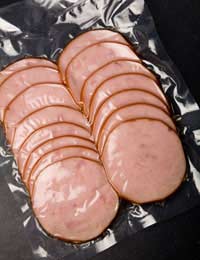 E figures with a prefix from E200 to E299 fall into the preservative classification. Here we offer an extensive explanation of preservatives looking at what they do and the actual preservative each E variety symbolizes.
E figures with a prefix from E200 to E299 fall into the preservative classification. Here we offer an extensive explanation of preservatives looking at what they do and the actual preservative each E variety symbolizes.
Preservatives play a crucial part in prepared meals. Normally, clean or organic items have a restricted lifestyle expectancy and will go off or corrosion after a certain time interval. One of the promoting points of unhealthy meals is that it continues more time and can stay on the grocery store display or in our cabinets for a lot more time than if we were buying clean produce. It’s thanks to preservatives that living of prepared meals is extended so much, as it’s these preservatives which allow this to be possible.
Not only do they help meals last more time before being started out, but preservatives also help things stay delicious for time after they’ve been started or the bundle has been started out. They work by suppressing and avoiding the development of mold that would otherwise create meals decline past its best.
The understanding of assisting items last more time is not a new concept – the art of protecting meals has been around for years and years. There are various types of preservative that come from organic resources, such as sodium and therapy, and these are still used in this way today. But in today’s modern world there are also numerous artificial or man made preservatives and these create up many of the E figures in this classification.
Some of the preservatives used in meals include blood potassium nitrate (E249) and blood potassium nitrate (E252), which are frequently used to help protect foods, such as ham, corned meat and bread. When fresh fruits are dry, they need an included extra to help protect their flavor, look and flavor, and sulphur dioxide (E220) is generally used for this objective.
Complete Referrals Information to Preservatives
The following offers an extensive reference secrets and techniques for all the preservatives widely used in meals and beverages. If you’re eager to prevent items with certain E variety preservatives in them, why not create out this list and take it shopping with you, so you can see at a peek which figures it is you’re eager to prevent.
- E200 – Sorbic acid
- E201 – Sodium sorbate or sorbic acid sodium salt
- E202 – Potassium sorbate
- E203 – Calcium sorbate
- E210 – Benzoic acid
- E211 – Sodium benzoate
- E212 – Potassium benzoate
- E213 – Calcium benzoate
- E214 – Ethyl 4-hydroxybenzoate
- E215 – Ethyl 4-hydroxybenzoate sodium salt
- E216 – Propyl 4-hydroxybenzoate
- E217 – Sodium salt of E216
- E218 – Methyl 4-hydroxybenzoate
- E219 – Sodium salt of E218
- E220 – Sulphur dioxide
- E221 – Sodium sulphite
- E222 – Sodium hydrogen sulphite
- E223 – Sodium metabisulphite
- E224 – Potassium metabisulphite
- E225 – Potassium sulphite
- E226 – Calcium sulphite
- E227 – Calcium hydrogen sulphite
- E228 – Potassium hydrogen sulphite
- E230 – Biphenyl
- E231 – 2-hydroxybiphenyl
- E232 – Sodium biphenyl-2-yl oxide
- E233 – 2-(Thiazol-4-yl) benzimidazole
- E234 – Nisin
- E235 – Pimaracin
- E236 – Formic acid
- E237 – Sodium formate
- E238 – Calcium formate
- E239 – Hexamine
- E240 – Formaldehyde
- E242 – Dimethylcarbonate
- E249 – Potassium nitrate
- E250 – Sodium nitrite
- E251 – Sodium nitrate
- E252 – Potassium nitrate
- E260 – Acetic acid
- E261 – Potassium acetate
- E262 – Sodium acetate
- E263 – Calcium acetate
- E270 – Lactic acid
- E280 – Propionic acid
- E281 – Sodium propionate
- E282 – Calcium propionate
- E283 – Potassium propionate
- E284 – Boric acid
- E285 – Sodium tetraborate
- E290 – Carbon dioxide
- E296 – Malic acid
- E297 – Fumaric acid

0 comments: